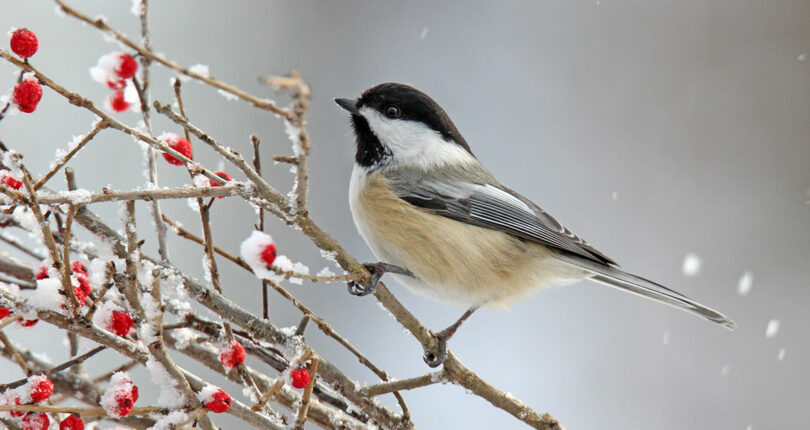Now that leaves have fallen and summer plants have died or gone dormant, winter landscapes seem a bit dull compared to summer’s luscious greenery and fall’s brilliant foliage. While November makes us yearn for color, it’s the perfect time to identify garden areas that could use some winter interest.
Spruce up drab areas by arranging evergreens, flowering shrubs, and deciduous trees to create focal points. Popular evergreens in Colorado include arborvitae and junipers. Junipers are versatile, with Rocky Mountain juniper thriving above 5,000 feet and pinyon juniper growing on the dry Western Slope. There are even juniper ground covers like creeping juniper which is drought tolerant and provides excellent erosion protection while adding color.
If you are looking for an unusual evergreen, the silver leaves of compact white fir (Abies concolor “Candicans”) provide a beautiful contrast to other evergreens. Another unusual look is achieved by planting deciduous trees with unique bark textures. Birch trees, especially paper birch with its white exfoliating bark, are particularly striking in winter. They grow in zones 3–9, but prefer cool, moist conditions; they’re not well suited to areas with hot, dry summers.
Many flowering shrubs do well in Colorado’s hardiness zones, and ones that produce berries have an added benefit of sustaining birds over winter. Hollies are lovely, low-maintenance plants. Like other evergreens, they prefer acidic soil. They produce the best flowers and fruit with sunlight, but they do tolerate shade. Blue holly has glossy, blue-toned dark leavesand bright-red berries. Japanese holly has more rounded leaves with black berries. Inkberry, a North American native plant
with small oval leaves and black berries, is more tolerant of different soils.
When planting hollies, remember they are “dioecious” (female plants won’t produce fruit without a male nearby for cross-pollination). Typically, one male, planted within 50 feet, will pollinate five females. Identify males by their spring flowers with pollen in the middle and females by flowers with a green berry in the center. If in doubt, ask your garden center to identify males and females for you.
Witch hazel (a tree pruned to grow as a large bush) offers wispy yellow or orange flowers that typically appear from October
to December and often remain on branches after leaves fall. It does best in full sun and well-drained acidic soil but will grow in clay. Winter jasmine, another late-flowering bush has lemon-yellow flowers and grows best in southern Colorado.
Shrubs planted in the back of flower beds, along walls, fences, and railings provide backgrounds that make flowers
stand out regardless of the season. Winterblooming silver leaf cyclamen is particularly striking against green shrubs. It’s a border plant, grows 3 to 4 inches high and boasts pink or white flowers from late winter to early spring. Helleborus Royal Heritage Strain is another winter-blooming border plant that grows 18–24 inches.
Winter is not the best time to plant, but you can begin implementing your plan and focus on hardscape structures such as trellises, benches, birdbaths, and sculptures.
By planning now, you can start to accomplish winter garden beauty after the ground thaws, and you can plant in spring.
Master Gardener Vicki Spencer has an eclectic background in conservation, water, natural resources and more.

